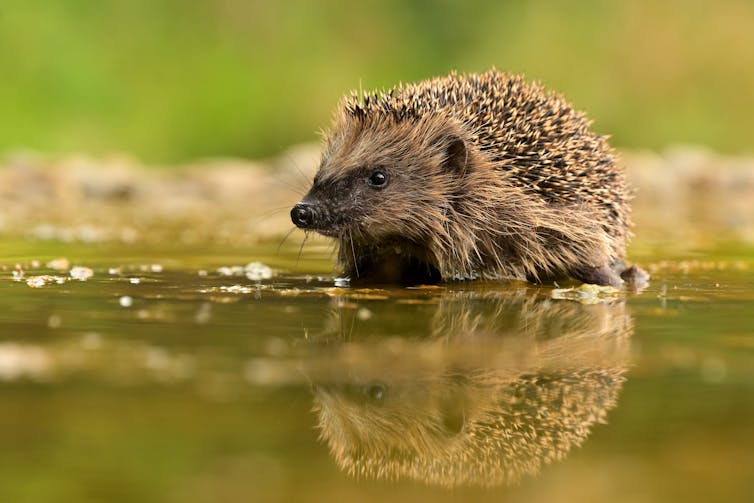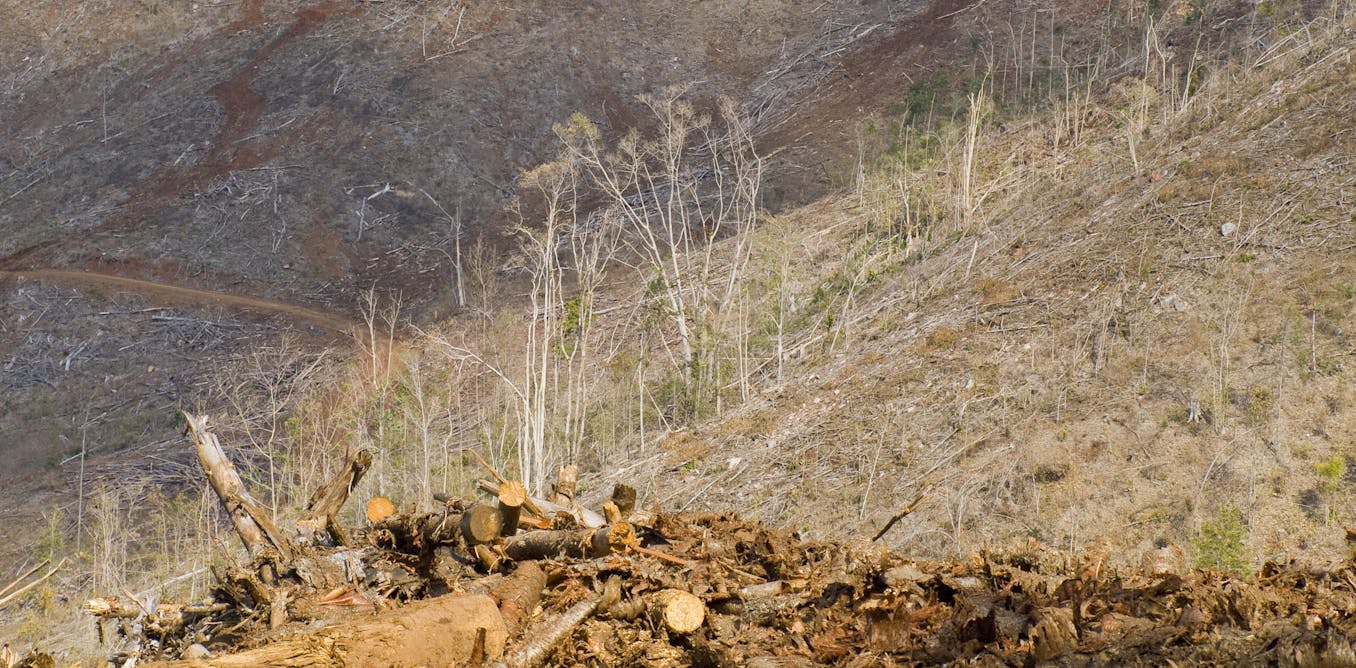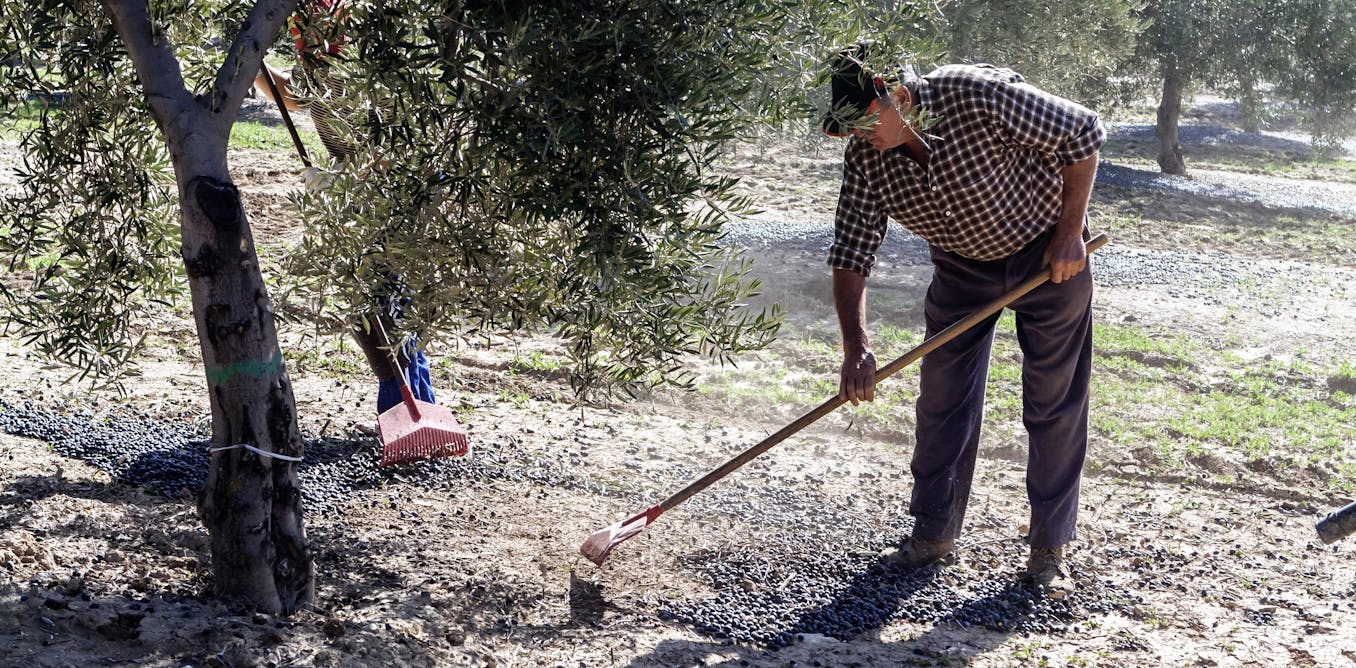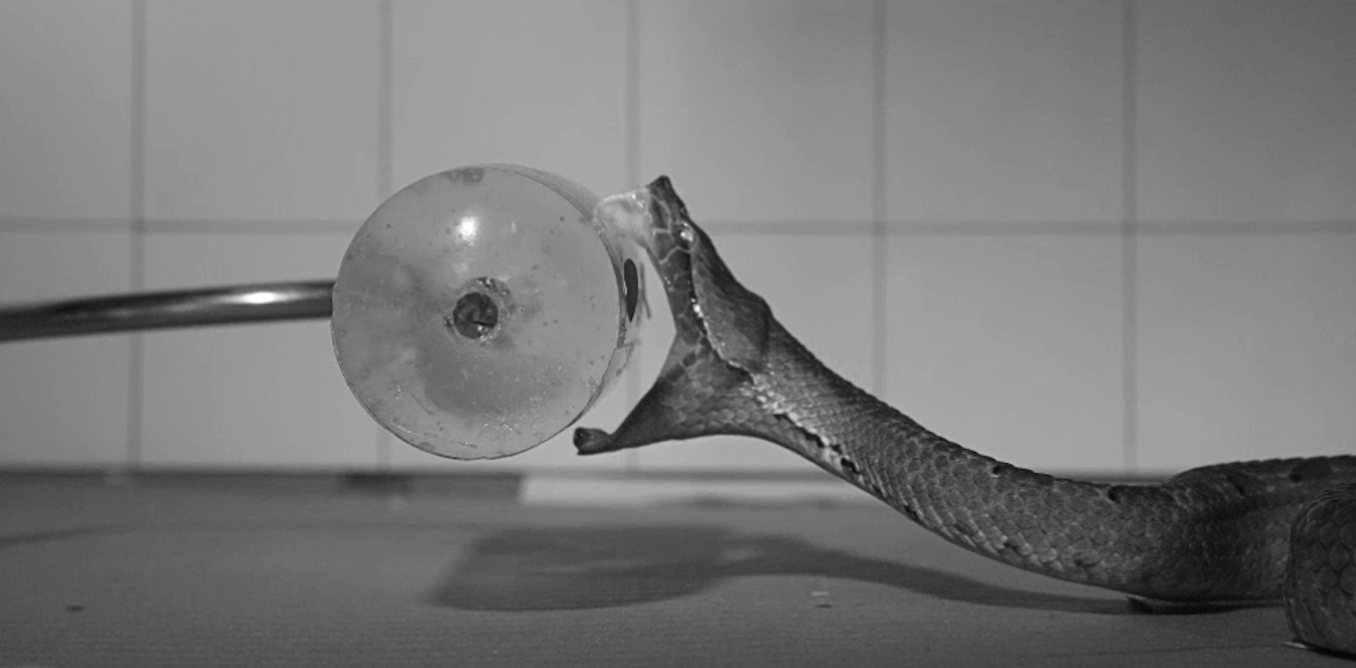Biodiversity, the rich variety of life found on Earth, is vanishing. I’m a conservation scientist keen to monitor this loss to better understand where efforts to reverse it will be most effective. And I might have hit on a novel solution.
I study European hedgehogs, the popular spiky mammals that inhabit our gardens. Hedgehog populations are declining massively, with an estimated loss of up to 75% in the rural areas of the UK during the past 25 years.
Thanks to insights gained in my research, I, Dr Hedgehog, believe that this species could be helpful for mapping wider biodiversity. More specifically, its poo.
One probable cause of the decline in hedgehogs is a decline in insects, which form a major part of their diet. During my many nights of radio-tracking hedgehogs, I came up with the idea of analysing environmental DNA (eDNA) contained in samples of hedgehog poo to discover what the hedgehogs are eating and through that, what’s living locally.
The eDNA method could reveal genetic traces of all organisms present in the samples in a single analysis. And, as we’ll see, these prickly mammals have a surprisingly liberal diet.
Get your news from actual experts, straight to your inbox. Sign up to our daily newsletter to receive all The Conversation UK’s latest coverage of news and research, from politics and business to the arts and sciences.
Due to the loss of natural habitats, hedgehogs are increasingly living in gardens, and this is where the battle to save the hedgehog will take place. My research showed that European hedgehogs in residential areas normally visit ten to 14 gardens a night.
Here, they eat a wide selection of prey, primarily insects, snails, slugs and worms, but also birds’ eggs (from ground-nesting birds – they don’t climb trees). They are scavengers too, and will munch on all sorts of dead animals.
What most people don’t realise is that these adorable little creatures are also ferocious predators. If they can get their paws (or perhaps more correctly, their jaws) on live prey, they will eat chicks that have fallen out of nests or amphibians such as salamanders, newts and frogs. They are excellent swimmers and sometimes catch fish in garden ponds.
I have seen hedgehogs taking on adult pigeons or full-sized chickens, and winning. Hedgehogs also sometimes chew on the faeces of foxes and lick the saliva onto their spines, probably with the purpose of masking their scent against predators.

Nojafoto/Shutterstock
We are not sure whether hedgehogs eat fruit and plants intentionally, or if they are actually after the worms or insects living on them – hedgehogs are officially categorised as “insectivores” – but vegetation shows up in the stomachs of dead hedgehogs too. The DNA from plants ingested by the insects, worms and snails eaten by hedgehogs, will also show up in an analysis of hedgehog poo.
In terms of a guide to local biodiversity, hedgehogs are the full package.
Hedgehogs live and forage in a small area. They poop a lot, and their faeces are easy to recognise and collect. If we keep the hedgehog population going, we won’t run out of sample material any time soon.
Before DNA analysis was invented, it was very difficult to determine the diet of a hedgehog, because a slug is reduced to nothing after a trip through its digestive tract, and it’s hard to identify a species from a chewed-off beetle leg. In contrast, it only takes a tiny fragment of a species to show up in an eDNA analysis of hedgehog faeces, so imagine what we could discover.
In these times of drastic biodiversity loss, we need to establish good and reliable methods for monitoring biodiversity. An analysis of a hedgehog poo could even reveal elusive species which may have been categorised as extinct in the area.
My idea of biodiversity monitoring through hedgehog poo has spawned ridicule and numerous rejection letters for funding applications. I refused to let it stop me. So I have created a crowdfunding campaign where you can support the research by purchasing a hedgehog poo and getting a certificate. I have 800 hedgehog faecal samples collected from all over Denmark, England and Scotland, stored in a freezer ready to be analysed.
The work has begun, and my colleagues and I have found some very interesting results already. One is the remarkable scarcity of bird DNA in hedgehog faecal samples collected from islands, where hedgehogs are accused of posing a threat to ground-nesting birds by eating their eggs. We are confident that our method works as we tested it beforehand by feeding quail eggs to hedgehogs, and found lots of bird DNA in the samples.
When I have managed to raise the remaining funds, we will continue the investigation.
This is the story of how I discovered that hedgehog droppings are gold. If you would like to know more, watch my talk on the subject here.

Don’t have time to read about climate change as much as you’d like?
Get a weekly roundup in your inbox instead. Every Wednesday, The Conversation’s environment editor writes Imagine, a short email that goes a little deeper into just one climate issue. Join the 45,000+ readers who’ve subscribed so far.

The post “Hedgehog poo could hold important secrets about local biodiversity” by Sophie Lund Rasmussen, Research fellow in Ecology and Conservation, University of Oxford was published on 06/09/2025 by theconversation.com



































Leave a Reply